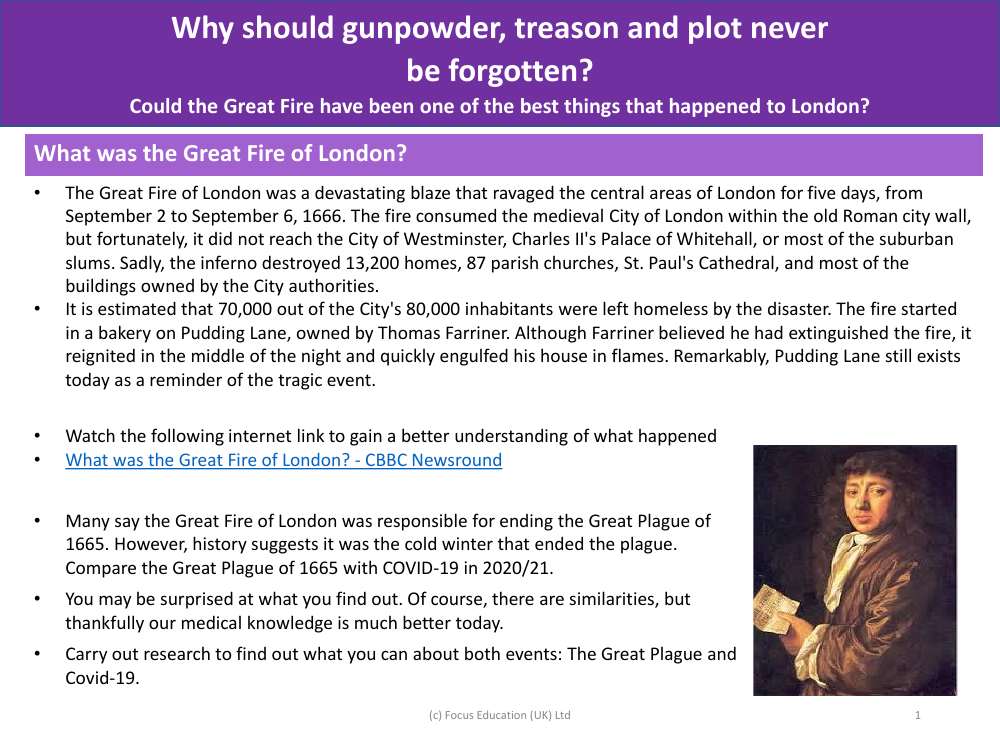What was the Great Fire of London - Info sheet

History Resource Description
The Great Fire of London was an immense conflagration that swept through the heart of London from the 2nd to the 6th of September, 1666. It obliterated much of the city within the ancient Roman walls, yet it spared the City of Westminster, the Palace of Whitehall, and the majority of outlying slums. This catastrophic event led to the destruction of over 13,000 homes, 87 parish churches, the iconic St. Paul's Cathedral, and numerous buildings under the City's jurisdiction. An estimated 70,000 of the 80,000 residents of the City were rendered homeless, marking it as one of the most significant disasters of the time.
The origin of the fire was traced back to a bakery on Pudding Lane, owned by Thomas Farriner. Despite Farriner's belief that he had completely extinguished the fire in his oven, it reignited during the night, setting his house ablaze and rapidly spreading throughout the city. Pudding Lane still stands today, a testament to the historical tragedy. Interestingly, there were claims that the Great Fire helped to halt the Great Plague of 1665, although historical evidence points to the cold winter as the more likely end to the plague. When comparing the Great Plague to the COVID-19 pandemic of 2020/21, one finds both similarities and stark contrasts, particularly in the advances of modern medical knowledge. Research into these two events reveals a fascinating comparison of public health crises separated by centuries.





